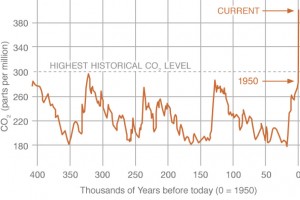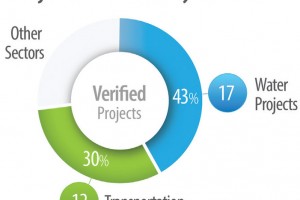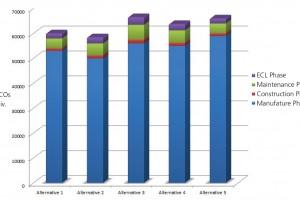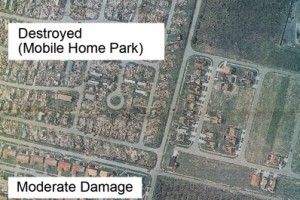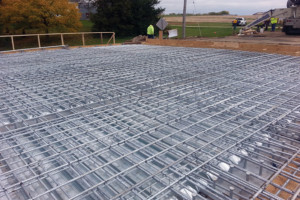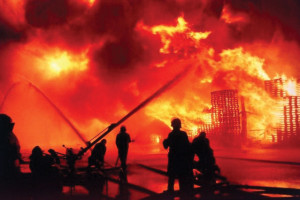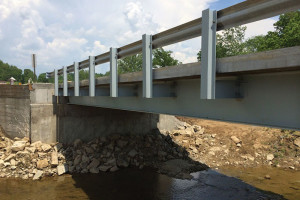Structural engineers have an unprecedented opportunity to contribute to green building certification. Within the green building practice, the U.S. Green Building Council’s (USGBC) Leadership in Energy and Environmental Design (LEED) rating system has set a precedent for green building standards and codes such as the IgCC, ICC 700, CALGreen and ASHRAE 189.1. The latest version of LEED v4, released in 2012, awards a total of 3 points for performing whole building life-cycle assessment and specifically limits the assessment to structure and enclosure to encourage participation from structural engineers. …
Review Category : Structural Sustainability
Structural Engineers and Climate Change
Anthropogenic (human-caused) emissions of greenhouse gases (GHG) into the atmosphere, particularly carbon dioxide, are causing dramatic changes to the earth’s climate and oceans. These changes are described in detail in the authoritative and comprehensive reports written by the United Nations Intergovernmental Panel on Climate Change. …
A modern challenge of the engineering profession is to account for the unintended consequences and life cycle costs from impacts of infrastructure on the environment, society, and economy. While this challenge has been realized on a global scale for more than half a century, tools for design professionals in the United States to systematically address this challenge were not developed until the formation of the Leadership in Energy and Environmental Design (LEED) by the United States Green Building Council. LEED, while bringing the building industry forward, did not directly address sustainability of nonbuilding civil infrastructure. However, Envision, developed by the Institute for Sustainable Infrastructure (ISI), did. …
The built infrastructure is one of the largest contributors to various measures of environmental impacts, e.g., energy consumption and carbon dioxide (CO2) emissions. There is sustained momentum towards decreasing this impact. This momentum is consistent with the ASCE Code of Ethics which states, in part, that engineers “shall strive to comply with the principles of sustainable development in the performance of their professional duties.” …
Designing structures to resist extreme wind events is critical to providing sustainable structures that perform as needed throughout their design life. While the primary structural system is usually sufficiently designed by the structural engineer, the building envelope is composed of a variety of elements with minimal input from the structural engineer. …
Improving Performance of Concrete Structures
Corrosion of steel reinforced concrete affects everyone, leading to expensive repairs and intensive maintenance programs. Budgeting of repairs and maintenance programs becomes difficult when structures do not meet their intended life cycle requirements. Corrosion of reinforcing steel in concrete structures leads to concrete failure, impacting the public with delays and detours. …
Fire is an extreme loading condition that must be considered in the design of buildings. Upon initial ignition, building fires are typically small, localized and dealt with efficiently by active protection systems, such as sprinklers. In certain situations, where there is adequate fuel, ventilation, and lack (or failure) of active protection systems, the compartment fire may flashover and develop into an extreme fire loading scenario. During such design fire scenarios, the gravity loading on the structure does not change significantly, but the structural properties (elastic modulus, yield strength, and failure strength) of the steel and concrete materials decrease dramatically. …
Repurposing Steel to Replace Short Span Bridges
County engineers face a daunting balancing act when it comes to keeping their roads and bridges in service. Today’s transportation needs are much more demanding than what the current infrastructure can handle. This is especially true when it comes to repairing or replacing bridges. Most of the bridge inventory in state and local jurisdictions is classified as short span, less than 140 feet in length. …
The New Structural Design Parameter
Economically ensuring the strength and stability of structures while adequately addressing serviceability concerns has always been the main goal of structural engineers. As members of design teams, engineers typically leave the nonstructural aspects of the project’s design requirements to others on the team. It’s now time to acknowledge our role and responsibility in another aspect of design: reduction of emissions of carbon dioxide and other global warming potential (GWP) gases from the construction and operation of our projects. …
The U.S. Green Building Council (USGBC) continues to drive market transformation related to green building. Most recently, this is evidenced by the increase in the number of manufacturers and trade associations that have undertaken development of product category rules (PCRs) and environmental product declarations (EPDs) in response to a new credit in LEED v4. This article discusses the status of PCRs and EPDs in the concrete industry and how they can be used by structural engineers. …


